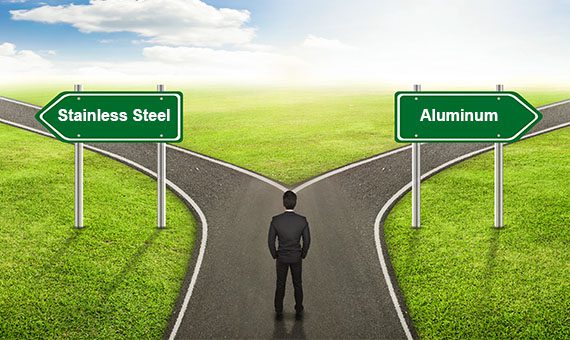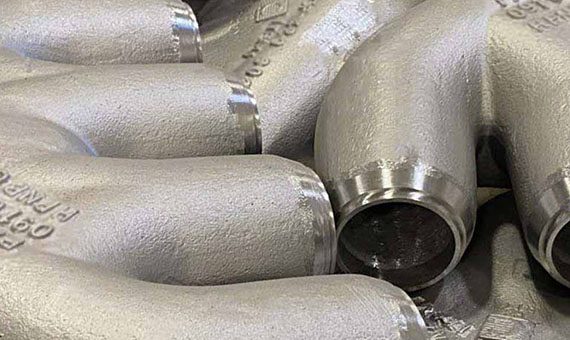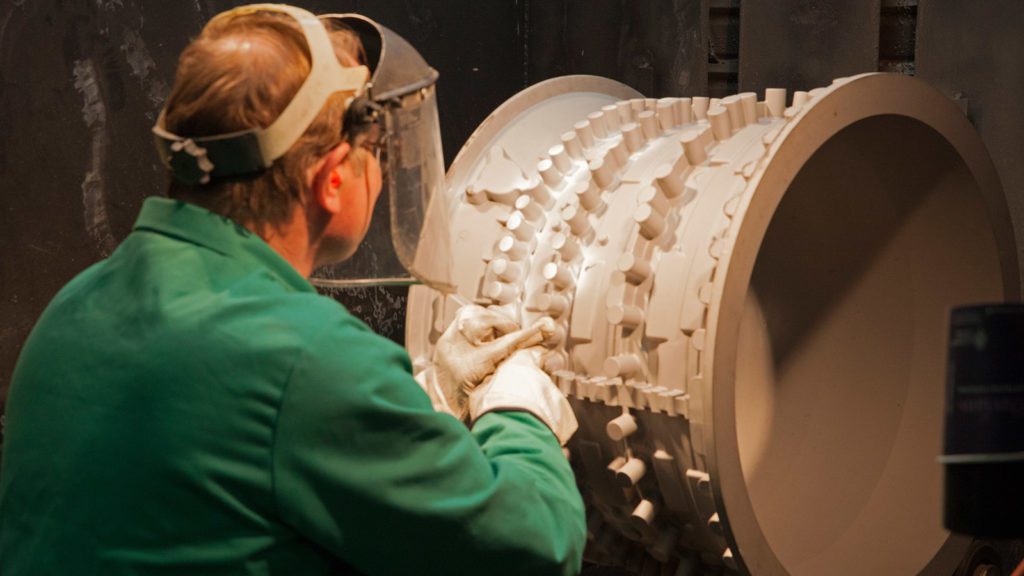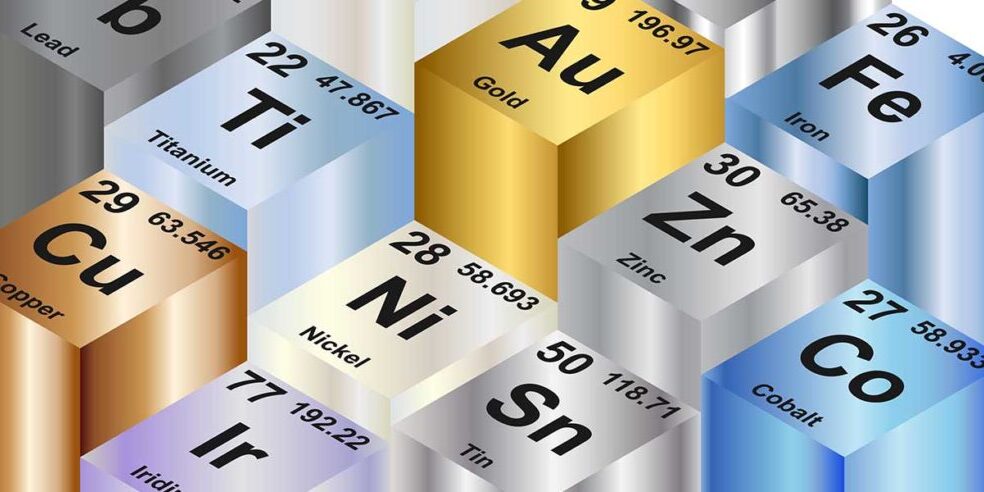Blog Stainless Steel VS Aluminum Castings: When To Use Each
Selecting the best metal alloy for your components can be challenging. Two popular choices are aluminum and steel, more specifically stainless steel. Every component and its application are different so there is not a “one size fits all” alloy. However, this article will provide tips for determining which alloy, aluminum or steel, is a better fit based on your application and requirements. Let us start by evaluating the key differences between stainless steel and aluminum.
First is how to tell if something is aluminum or steel. While they have similar applications, they are totally different. Selecting the best metal alloy for your components can be a challenge considering how similar their uses can be. There is not a “one size fits all” alloy for metal components.

Stainless Steel vs. Aluminum: The Key Differences
Heat Resistance:
Stainless steel offers better heat resistance than aluminum. Stainless steel is resistant up to 2500℉ (1371°C) but aluminum is up to only 400℉ (204°C). However, in colder temperatures aluminum’s strength increases and stainless steel becomes more brittle.
Malleability:
Aluminum is ductile and easy to machine. It is softer and easier to stretch and bend. Stainless steel is easy to machine depending on experience but does take longer. Breaking can occur more frequently in stainless steel applications than in aluminum ones.
Strength vs. Weight:
Stainless steel has a clear strength advantage over aluminum. It is simply denser and stronger. Interestingly, aluminum has a better strength-to-weight ratio. Aluminum typically weighs 1/3 of steel. Strength to weight is an important factor for certain applications like aerospace.
Corrosion Resistance:
Both aluminum and stainless steel offer corrosion resistance. Stainless steel will typically perform better depending on the environment. It’s worth noting that sodium chloride (salt) will corrode aluminum. Stainless steel’s corrosion resistance and rust resistance makes it highly versatile in a range of industries.
Cost:
For metal cast parts, stainless steel will likely cost more depending on the size, shape, specific alloy used, and current metal prices. Stainless steel offers a better price based on weight, due to density. On the other hand, aluminum is a better option based on volume.
Environmental:
Both stainless steel and aluminum are excellent materials for the environment and have high degrees of recyclability. The properties of both remain unchanged after recycling.
Stainless Steel vs. Aluminum: The Bottom Line
Stainless Steel Advantages:
• Excellent strength
• High heat resistance – up to 2500℉ (1371°C)
• Non-corrosive
Aluminum Advantages:
• Low density – lightweight
• Easy to machine
• Non-corrosive

Stainless Steel vs. Aluminum: Common Applications
In general, applications that have low heat and lighter weight requirements tend to fit better with aluminum.
Applications that require high heat or superior strength are great fits for stainless steel. Stainless steel also works better for industrial or heavy-duty needs.
Here are just a few examples of when to use stainless steel and aluminum.
Stainless Steel Common Applications:
• Gears
• Bearings
• Shaft sleeves
• Mandrels & forming dies
• Petrochemical tubes and fittings
• Pump & valve components
• Turbine engine components
• Papermaking rolls
• Food & beverage process equipment
• Chemical & pharmaceutical processing equipment
• Furnace rolls
• Pressure vessels
• Medical devices
Aluminum Common Applications:
• Automotive components
• Housings
• Firearms
• Aerospace parts
• Gear boxes
• Impellers
• Brackets
• Patio furniture
• Medical devices
• Heat sinks
• Pump & valve components
Aerospace Applications: Taking A Closer Look
Aluminum is commonly used in aerospace applications due to its excellent strength-to-weight ratio. With the push to increase fuel efficiency and reduce CO2 emissions, aluminum fits the bill by achieving reduced weight without sacrificing a lot of strength and performance.
Stainless steel is used for parts that have more heat-intensive needs or critical structural components. For example, many of the engine parts are stainless steel since strength is a necessity and they experience higher temperatures.

Summary
Like all metal projects, there are a variety of factors that impact the decision to use stainless steel or aluminum. From longevity, heat tolerance, or strength requirements, the project can shift one way or the other. Aluminum and steel have a wide range of uses and versatility.
Stainless steel excels in heavy-duty and high-heat project applications. Aluminum offers a great weight-to-strength ratio for more efficiency and cost savings at times. There is never one solution that fits all. MetalTek will work with you to determine the best metal alloy for your specific requirements. We take great pride in building a relationship with each customer to ensure the best fit is determined. While MetalTek does not pour aluminum, if aluminum is the better fit for your application, we will let you know.
We welcome the opportunity to evaluate your metal casting needs to determine if MetalTek is a fit for you and your needs. Contact us today!



